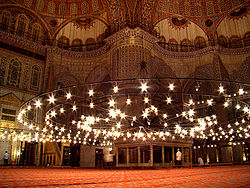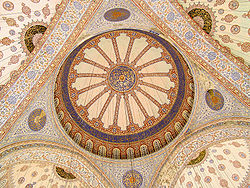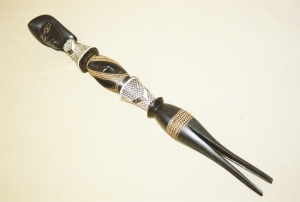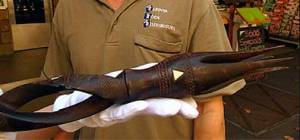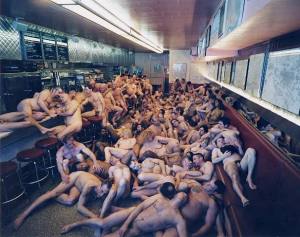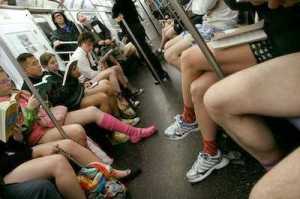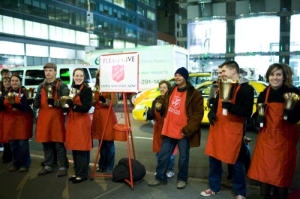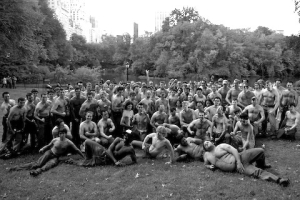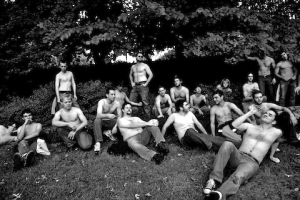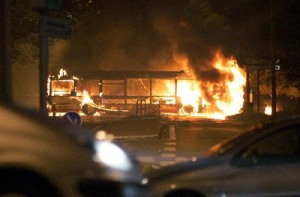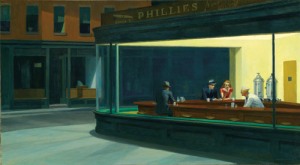The Blue Mosque
April 27, 2010
I have chosen the Sultan Ahmed Mosque or the “Blue Mosque” as my non western art. Archtiecture is the most elaborate expression of art, and when involved with religion can be the most significant.
The Blue mosque was built between 1609 and 1616 by Sultan Ahmed I after losing a major war with Persia. He decided to build the temple to regain favor with god. He chose architect Sedefhar Mehmet Aga to build the mosque. The Blue Mosque was built over the site of the Imperial Palace of Constantinople. The Palace was the home of the Eastren Roman Emperors and was the Center of the western world for many years.
This mosque got its nickname from the blue tiles used in the interior. The mosque has many of the archtypical tile mosaics of Islamic art and the minarets that are so important to Islamic prayer.
This is an interior photo of the main prayer room.
This is the same prayer room, with the elaborate chandeleir lighting the room.
This is the ceiling view of the great dome. Note the traditional Islamic mosiac and the blue tiles.
ICULANIBOKOLA-Canibal Forks
April 27, 2010
ICULANIBOKOLA-Fijian Canibal forks
I chose Fijian cannibal forks as my ‘non-western’ visual art. These pieces are as far removed from modern western behavior as possible. While we may consider it a touch gruesome, forks were pieces of great art and religious value for Fijian people.
The history of these forks dates back to a prehistoric group-the Lapita-that eventually founded the majority of pacific peoples. Fiji was settled by early Lapita, then inundated with Malay peoples and finally Polynesian peoples. These groups all have recent (well, recent is relative) history of cannibalism and is believed that the ancestral peoples of the pacific brought cannibalism with them as a cultural trait. This is of course contested. To narrow down my narrative, Fijians partook in cannibalism until the very late 1800’s on a wide spread scale, and in smaller isolated incidents until the 1920’s. American expeditions recorded active cannibalism on a tribal scale in the 1890’s. It must be noted that many accounts were biased and falsified, but many accounts were very diligently recorded by relatively open people. Canibalism was also recorded in photography and these are on display in Suva, Fiji
Cannibalism was a religious ritual in which ones enemy was disgraced by being consumed, and his energy/power was transferred to the consumer. If a victorious tribe was feeling rather hostile they would cook a victim and then fed him to the pigs or let him waste. This was an even worse insult.
These forks arose for several reasons. First is a cultural taboo that prohibits chiefs and priests from touching food with their hands. Common Fijians generally did not use utensils until Europeanization. One of the most important ceremonies a chieftain participated in was the devouring of their or the tribes enemy. Combining the significance of the event and the inability to use their hands the chiefs needed a way to participate-hence the development of the cannibal fork. Forks became a way to show power and influence. The fancier more elaborate the fork, the higher status the owner had. Combining social status, religion and warfare made production of these forks a royal undertaking. Elaborate carvings from unique materials including human bone became the sole purpose of dedicated craftsmen.
To make an analogy these forks were the equivalent of crowns, or thrones or in today’s world fancy sports cars and private jets.
However gruesome we might perceive these items (considering how many are made and sold a year as tourist nick-nacks we can’t be that squeamish) they are very beautiful and have amazing detail that when compared to the production technologies of the time and place are outright marvelous. Many of the European sculptures we have covered are not in this level of detail. These forks show that humans will make art in whatever context and in anyplace.
http://ngm.nationalgeographic.com/ngm/flashback/0303/index.html
http://query.nytimes.com/mem/archive-free/pdf?_r=1&res=950DE5DF143AE533A25751C1A9619C94609ED7CF
People as Art-Flash Mobs and Expression
April 15, 2010
This exhibit is about the ability of people themselves to be art. Originating and heavily influenced by performance art, Flash Mobs use groups of people to express an idea, an agenda or just for the artistic merit. Flash mobs can have a wide range of styles, impact and outcomes.
The term flash mob originated with author Larry Niven. Like most Sci-fi writers, Niven has had several scientific theories and concepts named after him or been responsible for their conception. (Larry Niven had Niven Rings and Niven Worlds, Arthur C. Clark invented satellites and so forth). It is not to often that a Science fiction writer titles an art movement.
“In 1973, the story “Flash Crowd” by Larry Niven described a concept similar to flash mobs.[14] With the invention of popular and very inexpensive teleportation, an argument at a shopping mall – which happens to be covered by a news crew – quickly swells into a riot. In the story, broadcast coverage attracts the attention of other people, who use the widely available technology of the teleportation booth to swarm first that event – thus intensifying the riot – and then other events as they happen. Commenting on the social impact of such mobs, one character (articulating the police view) says, “We call them flash crowds, and we watch for them.” In related short stories, they are named as a prime location for illegal activities (such as pick pocketing and looting) to take place.” http://en.wikipedia.org/wiki/Flash_mob
Flash Mobs derive their name and definition from the technology used to establish, assemble and control them. Cell phones, e-mail, twitter and IM programs are used to prevent the target from discovering the plan, or more maliciously prevent the authorities from intervening.
The most popular and well known Flash Artist is Spencer Tunick. Spencer Tunick has very little biographical data available at this point. He was born Jan.1, 1967. He is an American and lives in Brooklyn. His work started off small and had strong early influences from Guerilla art. Tunick began photographing singular nudes in urban London and has become famous for photographing large numbers of nudes in public spaces. Tunick eventually expanded his scope as his fame grew, culminating in May 6, 2007 in Mexico city where he had 18,000 nudes model.
Tunick recruits from his website and requires participants to submit their skin tone so Tunick can control the shades and hues of his piece. Each participant receives a signed print afterwards. Using the Internet ties Tunick in with Flash Mobbing. Many of Tunick’s shoots have been prohibited and he has had to resort to the more clandestine and ephemeral organization of flash mobbing.
Tunick initially began photographing for his own artistic statement, but has recently used his talent and fame to bring attention to different social issues.
The first of Tunick’s social statements was done at the request of Poz magazine in 2004 he photographed 85 HIV-positive men and women posing nude in Manhattan’s Florent restaurant to call attention to World AIDS Day.
Tunick also collaborated with Greenpeace in 2007 for a photo shoot in the Alps at Aletsch Glacier in Switzerland. This was to bring attention to the massive melt off that Aletsch has seen over just the previous year (328 linear feet). http://www.slate.com/id/2182124/
One of the eminent Flash Mob performance art groups in the US is Improve Everywhere. http://improveverywhere.com/. Created in 2001 by Charlie Todd, Improve everywhere is a large collection of sometimes collaborating artists and an even larger collection of “art” or participants. Improve Everywhere heavily uses mainstream technology to organize their activities. The Improve Everywhere is dependent on their website to spread news of previous “missions” and recruit for new events.
One event is the Underwear Flash Mob. This was an organized group of up to 900 people that rode the New York Subway (and Boston, Washington DC, Portland, San Francisco, Chicago, Toronto, Baltimore and Salt Lake City as well)
This was done for the 7th Annual No Pants Subway Ride. While this has become somewhat of an institution at this point, it still was an original Flash Mob and uses the same operating methods.
My Favorite Improve Everywhere “Mission” was the “Guerilla Handbell Stikeforce”. Improve Everywhere recruited Cory Davis, the bell choir conductor for Christ Church United Methodist in Manhattan for their mission. Improve Everywhere showed up to a location where a Salvation Army Christmas Bell ringer was working and “assisted him” in spreading Christmas cheer. The Church Handbell choir preformed with/for the Bell ringer.
“As we hoped, there was a bell ringer stationed in front of the entrance to the store. The Salvation Army often uses volunteers for this job, but in New York almost all of the bell ringers are paid, seasonal employees. Our goal with this mission wasn’t to make any sort of statement about the Salvation Army (an organization that I’m sure does lots of great charitable work, but also is not without controversy), but to create an awesome moment for one bell ringer and the random New Yorkers and tourists who happened to be in the right place at the right time.”
– Improve Everywhere
http://improveverywhere.com/2009/12/14/guerrilla-handbell-strikeforce/
Another Improve Everywhere mission was “No Shirts”. In October 2007 Improve everywhere influenced by the half naked models that worked at a local Abercrombie and Fitch recruited 111 men of all sizes and shapes to Flash Mob on the store. The men posed for photos before the Flash Mobbing and then entered the store to “shop” and pose for other customers-similar to what the paid models job was. The posed photos are in parody of Abercrombie and Fitch catalogs and advertizing.
http://improveverywhere.com/2007/10/17/no-shirts/
Flash Mobbing while a tool for artistic expression and performance theatre can also be a tool for revolution, rioting and destruction. In 2005 civil unrest in France, around Paris was fueled and controlled by operators using Flash Mobbing. Flash Mob operators used scouts to determine the location of riot police and directed the rioters around law enforcement to unprotected areas. When police would close in on the rioters they would be given advanced notice and disappear, to regroup at a different site later. 274 towns were subject to the traveling riot who moved in and out of communities unrelated to the original cause. (The deaths of two Muslim boys in a Muslim housing project). 8973 vehicles were damaged/set ablaze and 200 million Euros in damage was done through arson and vandalism to buildings. 2888 people were arrested and 126 Police and Firefighters were injured. http://en.wikipedia.org/wiki/2005_civil_unrest_in_France
While the underlying tensions that led tens of thousands to riot cannot be diminished or put aside, the use of Flash Mobbing allowed the violence to go on for weeks and spread out of control.
Nighthawk
April 10, 2010
I chose “Nighthawk” by Edward Hopper. I have always liked this painting and chose it even though I can only minimally relate it to the themes of the assignment. Edward Hopper does not quite fit into the general period of the Avant Garde and Abstraction, but what I call the counter-abstract movement and is closer to American regionalism.
Edward Hopper had made comments on this painting as being themed about predation (which fits the title) but this work is often been viewed with loneliness. http://en.wikipedia.org/wiki/Edward_Hopper I do not view the solitary man at the counter as threatening, nor the individual whose perspective the painting is from. Maybe there should be some eerie background music. I worked nights for several years and this painting reminds me of the silence and emptiness of a city at night. The painting is from 1942 so has closer ties to the end of the depression and the start of WWII than probably any other influences. This painting is clearly in a place before the war. I make this statement because there would have been two distinctions of mid war America. One is the droves of night shift factory workers. War manufacturing never shuts down and factories were kept open 24/7 by War’s end to keep up with demand. Therefore there would be tons of services such as diners for war workers. Two, is the lack of blackout curtains. Even the Plains States had blackout and light regulations. I think the artist himself is somewhat influenced by the depression. Hopper painted calm, easy going American and apple pie themes. I think these themes were popular because people longed for the pre-crash times when they could go to a diner. I think people found comfort in images that matched their perception of better times.


